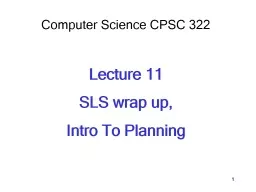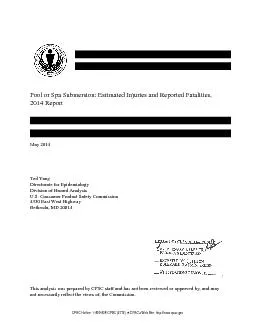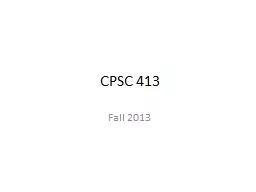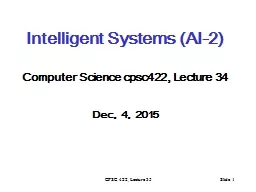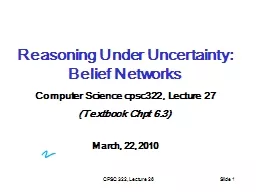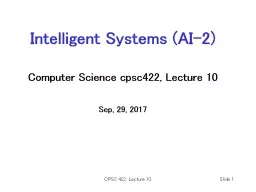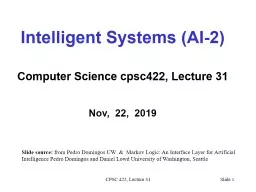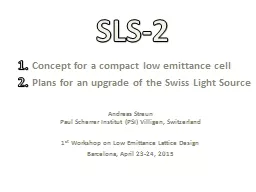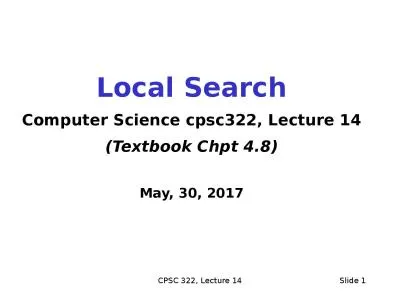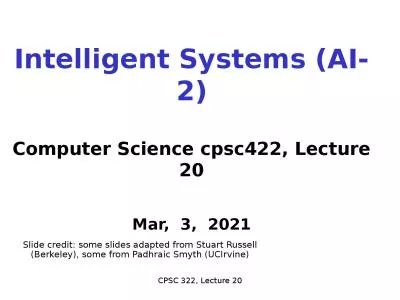PPT-Computer Science CPSC 322 Lecture 11 SLS wrap up, Intro To Planning
Author : liane-varnes | Published Date : 2019-11-02
Computer Science CPSC 322 Lecture 11 SLS wrap up Intro To Planning 1 Lecture Overview Recap of Lecture 10 SLS algorithms Comparing SLS algorithms SLS variants Planning
Presentation Embed Code
Download Presentation
Download Presentation The PPT/PDF document "Computer Science CPSC 322 Lecture 11 SL..." is the property of its rightful owner. Permission is granted to download and print the materials on this website for personal, non-commercial use only, and to display it on your personal computer provided you do not modify the materials and that you retain all copyright notices contained in the materials. By downloading content from our website, you accept the terms of this agreement.
Computer Science CPSC 322 Lecture 11 SLS wrap up, Intro To Planning: Transcript
Download Rules Of Document
"Computer Science CPSC 322 Lecture 11 SLS wrap up, Intro To Planning"The content belongs to its owner. You may download and print it for personal use, without modification, and keep all copyright notices. By downloading, you agree to these terms.
Related Documents

